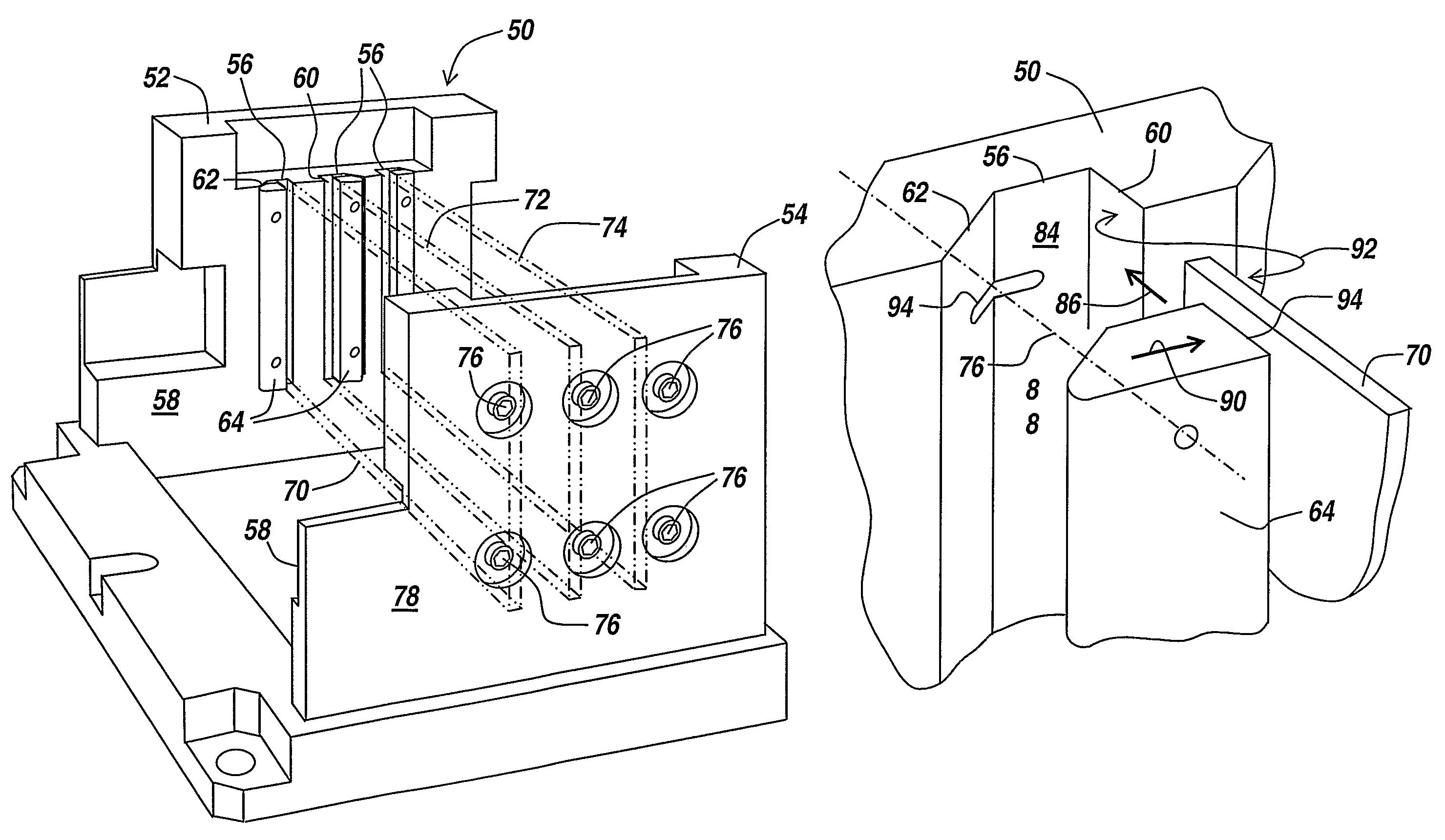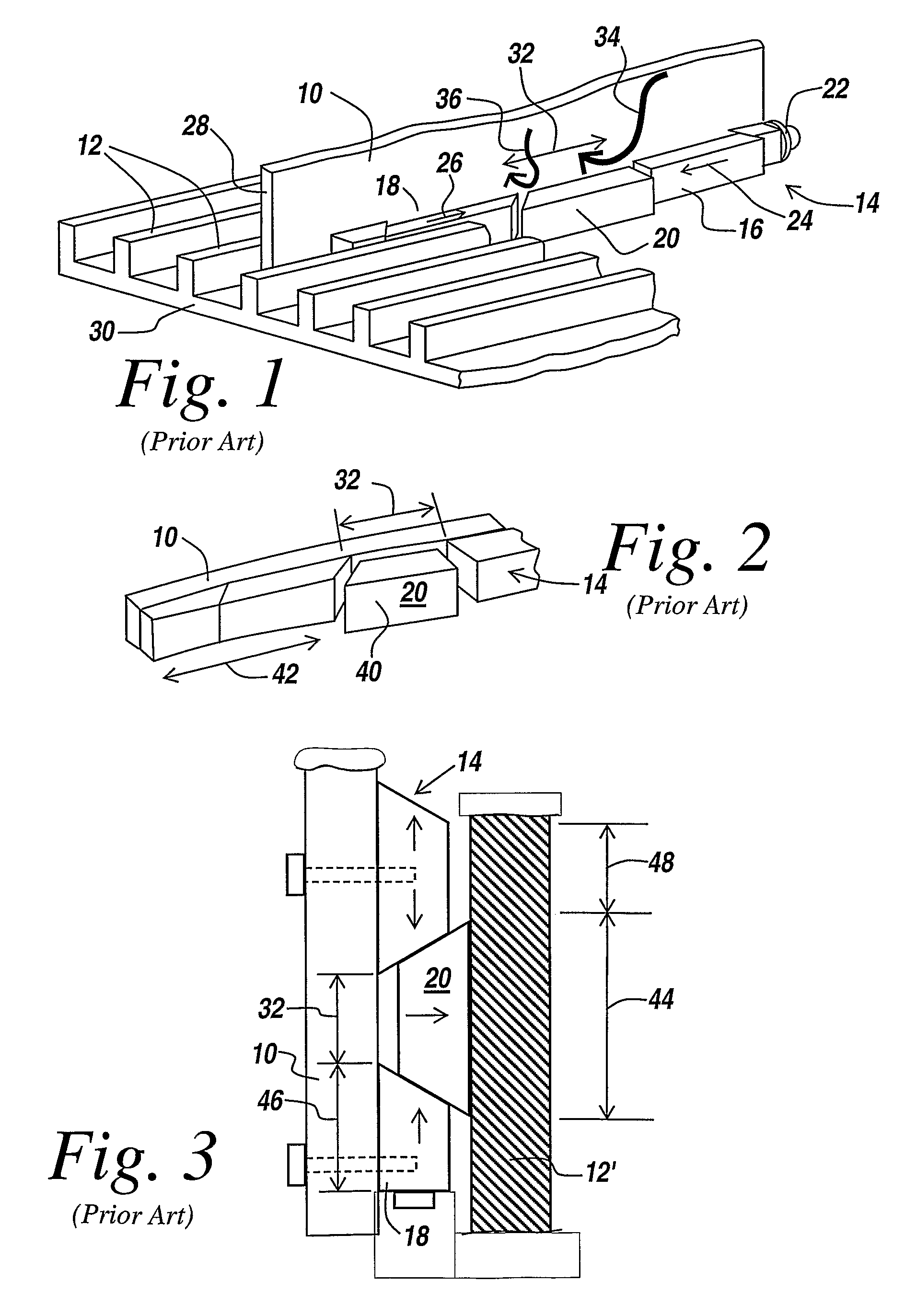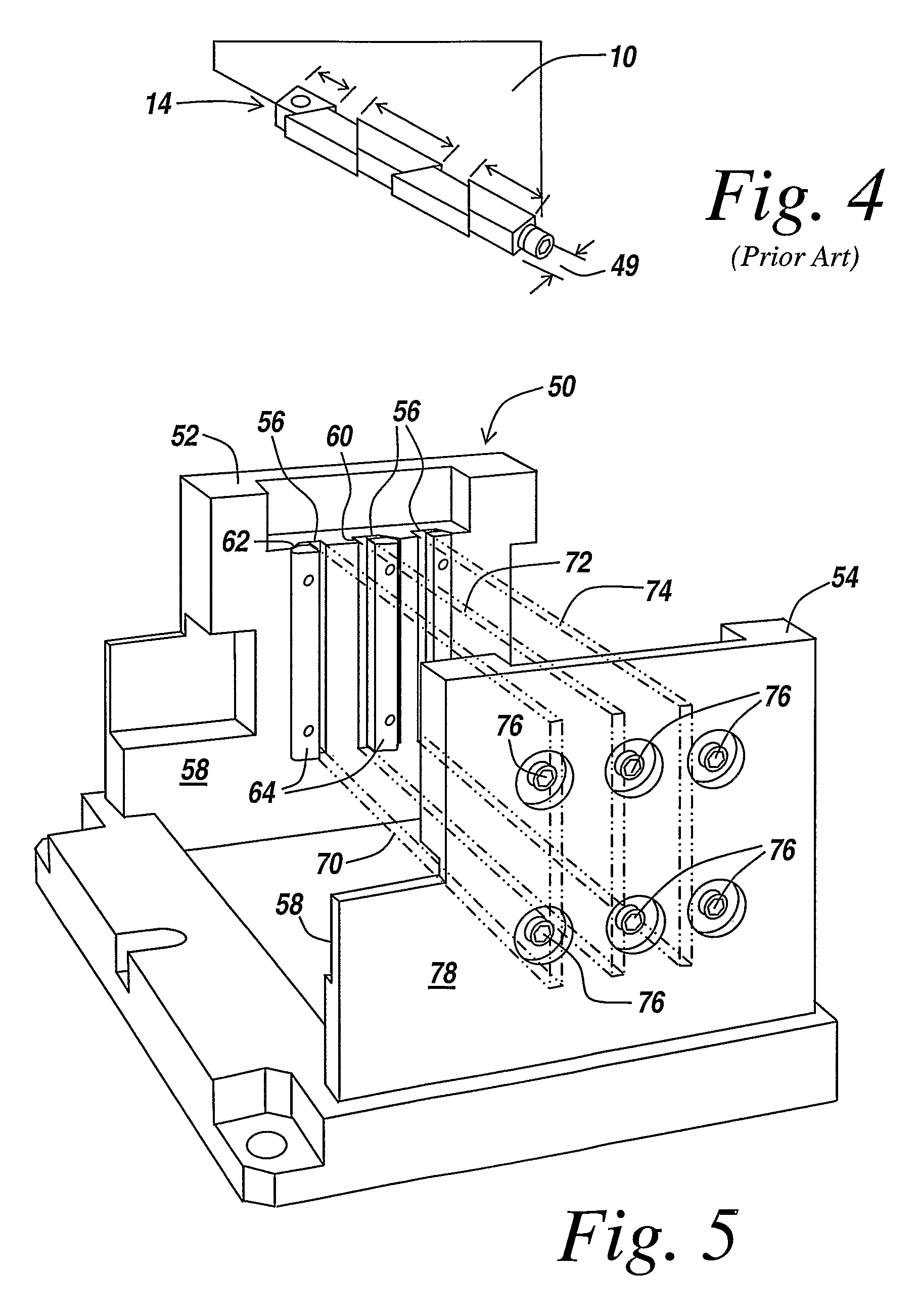High density card retention device
a card retention and high density technology, applied in the field of high density card retention, can solve the problems of not providing vibration or shock resistance in general, not supporting thermal transfer to a heat sink, and the edge connector, etc., to achieve the effect of avoiding non-optimal compression force, large size, and inability to support fine-pitch mounting
- Summary
- Abstract
- Description
- Claims
- Application Information
AI Technical Summary
Benefits of technology
Problems solved by technology
Method used
Image
Examples
Embodiment Construction
[0040]Referring now to FIG. 1, in the prior art a circuit board 10 is to be clamped to opposed upstanding ridges 12 through the use of a wedge lock assembly 14, which is a multiple-section device including stationary sections 16 and 18 mounted to the board, and a wedge 20, which is moved away from the board when a lead screw 22 is tightened to move sections 16 and 18 in the direction of arrows 24 and 26 respectively. Since the backside of board 10, here illustrated at 28, abuts a rib 12, the movable wedge 20 is moved by the aforementioned lead screw actuation to abut an opposed rib, with the ribs serving to define rectilinear channels in a chassis 30.
[0041]It will be appreciated that with lead screw actuation, wedge 20 moves away from the face of board 10 and contacts the opposing rib. This movement away from the card provides an area of no contact 32 such that heat flow from the board through the wedge lock assembly to the rib and thus the chassis is impeded as illustrated by arrow...
PUM
 Login to View More
Login to View More Abstract
Description
Claims
Application Information
 Login to View More
Login to View More - R&D
- Intellectual Property
- Life Sciences
- Materials
- Tech Scout
- Unparalleled Data Quality
- Higher Quality Content
- 60% Fewer Hallucinations
Browse by: Latest US Patents, China's latest patents, Technical Efficacy Thesaurus, Application Domain, Technology Topic, Popular Technical Reports.
© 2025 PatSnap. All rights reserved.Legal|Privacy policy|Modern Slavery Act Transparency Statement|Sitemap|About US| Contact US: help@patsnap.com



